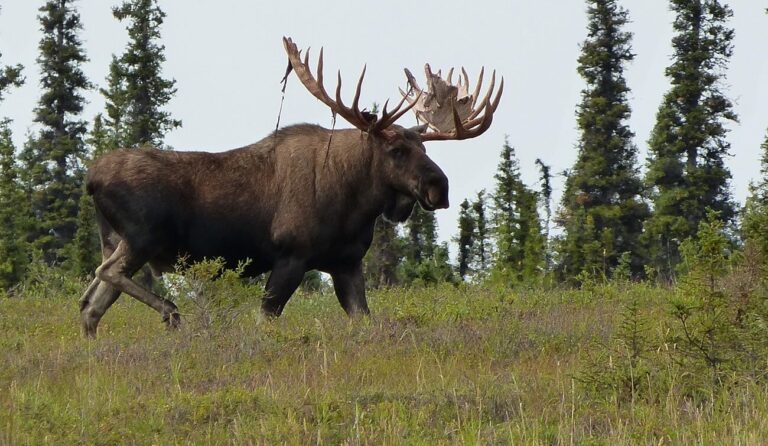Lion: King of the Jungle – Facts, Behavior, and Conservation
Lions are among the most iconic animals in the world, often referred to as the “king of the jungle” despite primarily inhabiting grasslands and savannas. Their majestic presence and social behavior make them one of the most fascinating members of the animal kingdom. This article explores the lion’s scientific classification, physical characteristics, habitat, behavior, diet, reproduction, predators, and conservation status. It also delves into their evolutionary history, relationship with humans, and some interesting facts.
Contents
Scientific Classification
- Kingdom: Animalia
- Phylum: Chordata
- Class: Mammalia
- Order: Carnivora
- Family: Felidae
- Genus: Panthera
- Species: Panthera leo
Lions are members of the Panthera genus, including tigers, leopards, and jaguars. Their scientific name, Panthera Leo, reflects their classification as large cats, commonly called “big cats.”
Physical Characteristics

Lions are one of the most giant cats in the world, with a muscular build, powerful jaws, and a distinct golden-brown coat. They are sexually dimorphic, meaning males and females differ significantly in appearance. The key characteristics include:
- Mane: Male lions possess a thick mane that ranges in color from light blonde to dark brown or even black. This mane protects them during fights and serves as a symbol of dominance and attraction.
- Size: Males can weigh between 330-550 pounds (150-250 kg), while females are smaller, weighing 260-400 pounds (120-180 kg).
- Length: Lions can grow up to 10 feet long (3 meters) from head to tail.
- Teeth and Claws: Lions have sharp, retractable claws and long canine teeth that help them capture and subdue prey.
Habitat
Lions primarily inhabit sub-Saharan Africa’s grasslands, savannas, and open woodlands. Small populations are also found in the Gir Forest of India, where they are classified as Asiatic lions (Panthera leo persica). Lions prefer habitats with plenty of prey and access to water, but they are highly adaptable and can also live in arid regions.
Behavior

Lions are unique among big cats in their social structure. They live in pride, complex social units of up to 30 members, including related females, their offspring, and one or a few dominant males.
- Pride Life: Female lions typically stay with the same pride for life, while younger, more muscular males often oust males.
- Territoriality: Males mark their territory using scent markings and vocalizations (roaring) to warn intruders. A lion’s roar can be heard up to 5 miles (8 km) away.
- Hunting: Lions are apex predators and primarily hunt in groups. The females, more agile and lighter than the males, do most of the hunting while the males defend the pride’s territory.
Diet
Lions are obligate carnivores, which means they rely almost exclusively on meat. Their prey typically includes:
- Herbivores: Lions hunt animals like zebras, wildebeests, buffaloes, and antelopes.
- Scavenging: Lions will scavenge from other predators like hyenas and leopards if the opportunity arises.
- Hunting Techniques: They are ambush hunters, relying on stealth and teamwork to take down larger prey. The females coordinate their movements, often encircling the target, while one lion initiates the attack.
Reproduction
Lions breed throughout the year, with no specific mating season. Female lions reach sexual maturity at around 4 years old, while males typically become dominant and begin breeding around 5 years old.
- Mating: A female in estrus may mate with the dominant male multiple times over several days.
- Gestation: The gestation period is around 110 days, after which the female gives birth to 1-4 cubs in a secluded den.
- Cub Survival: The mortality rate for lion cubs is high due to predation, starvation, and infanticide (males killing cubs that aren’t their own). Only about 50% of lion cubs survive to adulthood.
Predators and Threats
Adult lions have no natural predators, but cubs are vulnerable to hyenas, leopards, and male lions from other prides.
- Human-Wildlife Conflict: The biggest threat to lions comes from humans, including habitat loss, poaching, and retaliatory killings by livestock farmers.
- Infanticide: When a new male takes over a pride, he may kill the existing cubs to induce estrus in the females and pass on his genes.
Conservation Status
According to the International Union for Conservation of Nature (IUCN), lions are classified as Vulnerable due to declining populations across Africa and India. There are approximately 20,000 lions left in the wild, with the number steadily decreasing due to habitat destruction, poaching, and human conflict.
- Conservation Efforts: Programs like the African Lion & Environmental Research Trust (ALERT) and various wildlife sanctuaries are working to protect lion populations by promoting sustainable land use, reducing human-lion conflict, and strengthening anti-poaching measures.
Evolutionary History
Lions belong to the family Felidae, which evolved around 25 million years ago. The modern lion’s ancestor likely appeared in Africa about 1.8 million years ago. Fossil evidence suggests that lions once roamed Europe, Asia, and the Americas. Today, they are primarily confined to sub-Saharan Africa, except for a small population of Asiatic lions in India.
Relationship with Humans
Lions have had a complex relationship with humans throughout history. In ancient civilizations like Egypt, lions were revered as symbols of strength and power. They frequently appear in mythology and heraldry, symbolizing royalty, courage, and nobility.
In modern times, lions are featured prominently in zoos, wildlife reserves, and popular culture, from the movie “The Lion King” to sports mascots. However, this relationship is not without its conflicts. As human populations expand, lions are increasingly seen as threats to livestock, leading to conflicts with farmers.
Interesting Facts
- Lions Are the Only Social Big Cats: Unlike tigers and leopards, which are solitary, lions live in social groups called prides.
- Lazy Lifestyle: Lions are known for being somewhat lazy, often sleeping or resting for up to 20 hours daily.
- Apex Predators: As apex predators, lions play a crucial role in maintaining the balance of ecosystems by controlling herbivore populations.
Conclusion
The lion, often seen as the embodiment of power and majesty, symbolizes the wild. Its fascinating social structure, impressive physical prowess, and significant role in human culture make it a subject of admiration and concern. Conservation efforts are crucial to ensure that this iconic species continues to roam the grasslands of Africa and the forests of India for generations to come. Protecting lions means preserving a species and the delicate balance of ecosystems they help maintain.
- Are Rottweilers Good With Kids? Reasons & Training Tips - 17 September 2025
- How Long Are Dogs Pregnant: Complete Guide - 16 September 2025
- German Shepherd Doberman Mix: Info, Pictures, Care & More - 11 September 2025







